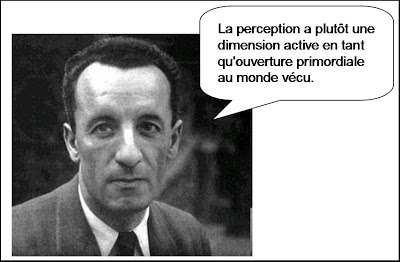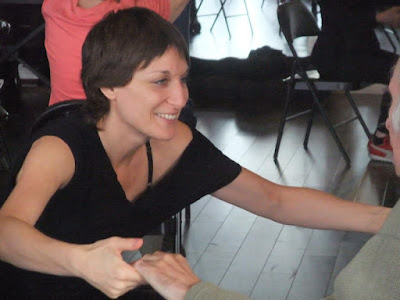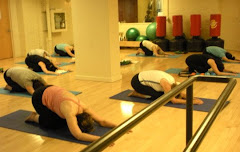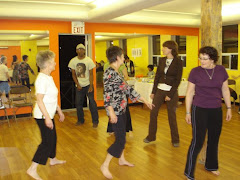 Developmental Trauma and The Developing Brain in Relation to Attachment Theory, Regulation Theory and The Neuroscience of Psychotherapy AKA Why People Need a Holistic, Integrative Dance-Forme Class
Please note these are the studies of the writer and need not be related to everyone. Find out what resonates with you, in your own way. Let me know! The ideas on the table, not necessarily right or wrong. So, let's find a place in-between so we can safely explore and discover in thought and deed. Moreover, studies change and theories change, so some ideas will become better articulated in the future.
Developmental Trauma and The Developing Brain in Relation to Attachment Theory, Regulation Theory and The Neuroscience of Psychotherapy AKA Why People Need a Holistic, Integrative Dance-Forme Class
Please note these are the studies of the writer and need not be related to everyone. Find out what resonates with you, in your own way. Let me know! The ideas on the table, not necessarily right or wrong. So, let's find a place in-between so we can safely explore and discover in thought and deed. Moreover, studies change and theories change, so some ideas will become better articulated in the future.
PART ONE:
Why does Miriam think We Need a Movement-Based Home-Base?
Let's start by looking at how our brain and bodies develop. When I say BODY, I mean, our nervous sytem that runs to every muscle in our body. I mean, our ability through an 'embodied-mind' to interpret information, and act or behave in gesture or deed with authenticity and reciprocity of care.
From birth (and before birth)our brain and body is shaped and nurtured - individually, interpersonally, and in space within natural time. We (brain-body) can also be shaped by neglect or abuse. Or a combination of both. Everyone has a story. Sometimes it hard to figure out, not what DID happen, but what DID NOT happen. As adults, as we see what the other options are, we bump into those places where a feeling or cognitive connection was not taught or maintained.
In infants we know the following "Limbic areas of the human cerebral cortex show anatomical maturation in the middle of 2nd year, suggesting that corticolimbic functional activity expressed in ‘emotional activities and mechanisms of memory are operating at this specific time.’ (Rabinowicz, 1979) This maturation reflects not only growth of connections but also a pruning [cutting off of] or parcellation [how we store info] (Ebbisson, 1980)
So, How we get treated and touched, from a 'sensory perspective', creates the nervous system and brain connections. We all get 'pruned' or 'parceled and packed' differently which affects all behavours and all thought processes. When I say, a sensory perspective, i mean, if we are taught to use our sense to gather information about ourselves, others and our environments. When our senses get ignored or over-rided or neglected, we don't develop our own senses or empathic perceptions well. We can become, senseless... in the true meaning.
I suggest that holistic fitness and DANCE CLASSES, movement classes and compassionate body practices can assist in experiencing a new 'home-base" for adults. I suggest that for people with a 'secure-base' already, movement programs push our creativity and authenticity - body-up - to places that benefit many, including ourselves. So come out, come out where-ever you are, and dance!
As children, if our families were open to exploration, our movement in the family in word, in deed, in motion, and in thought) essentially flows within and without. We learn to feedback and witness in authenticity of self, collective care-taking, and emotional love. When this 'home-base' is secure, our life can expand in safety. It’s like having a good place to run to when we fall, or being able to call “time out.” In J. Holmes’s chapter on Bowlby’s work titled, Attachment, Anxiety, Internal Working Models , “all of us, from the cradle to the gave, are happiest when life is organized as a series of excursions, long or short, from the secure base provided by our attachment figures.” (Holmes, p. 61, 1993).
I suggest that connective and integrative dance-fitness classes provide fun space for adults, seniors, and youth to a) connect to new senses b) explore visual and physical feedback c) share in a positive community environment d) integrate feeling, thought and speech d)practice self agency and self-other-care e) self regulate mood changes or electro-chemical systems f) practice spacial temporal cuing g)practice healthy relationships replacing abusive... and continue to be creative beings.
So, in class, over time, everyone gets to experience a new place to start from with physical consistency, care of community, collective movement, mutually understood gestures and embodied meanings, empathy, exploration, motivation, energy shifts, and the sense of being able moving through good times and bad times.
From a therapeutic perspective, the following can be said. In my experience with integrative dance, movement and martial art forms we find paths to foster neural growth and integration; This is expecially important for mental and nervous-system health on inter-personal and intra-psychic levels. In our aim for feelings of integration, movement, restoration, unity and peace, we can try...
1] The establishment of safe and trusting relationships
2] Gaining new information and experiences across the domains of cognition, emotion, sensation, and behaviours
3] The simultaneous or alternating activation of neural networks that are not integrated or dissociated.
4] Moderate levels of stress or emotional arousal alternating with periods of calm and safety
5] The integration of conceptual knowledge with emotional and bodily experience through narratives that are co-constructed with others
6] Developing a method of processing and organizing new experiences so as to continue ongoing growth and integration outside of therapy or counseling.
(Cozolino, p. 27, 2002)
In summary of the above, like Zen, one cannot dictate a set of rules to follow in relation to neural integration, emotional homeostasis via tolerance and regulation, body-based balance, or traumatic transcendence. But, in my experience, how we approach our own disconnection in ourselves and with others depends on what tools we have to listen, learn, and respond to the chance of trying new ways. If it is safe enough to try a new way...often, we do.
PART TWO:
Let's Look at the Brain a Bit More!
If you don't know about the brain, and how that develops, here is an beginners into. Everybody has two cerebral hemispheres that make up one brain. People tend to talk about the LEFT and RIGTH brain, but we need both working together. Dance teaches us to use form and flow, structure and creativity together.
The simple summary is this... The
LEFT part is where speech comes from. It also controls the right side of your body. In general...Our logic and reasoning skills come from the LEFT half as do number skills. The RIGHT side of your brain is, simply said, your creative and movement part - this is where we find flow, Zen, compassion, universality and so on. This is how we get the perfect soccer goal. The RIGHT is also known as the visual side. The RIGHT side is where spatial imagery comes from. This is where the feeling or open-ness of the dance studio has a meaning, where the sound of the teachers voice or music- in tonal density - carries significance.
It is the RIGHT brain that mediates dialogues of empathic cognition, sense-reception and relational/communicative gesture. If the emotional and sense-based development of an infant or child is stressed through 'misattunement' -
that is, a lack of the ability to communicate in sound, gesture, and deed with our caregivers, to reconcile with our caregivers, to survive basic neglect and so on we lose a lot in the development of our emotional and personal word-body-gesture development. We lose a lot in our self concept and self construct. More over, we can get wounded on the level of how we work with others and what we should expect from others.
If we get the chance cross trained our brains and bodies....we tend to fair a bit better. When we train both sides the two halves connect more strongly by a bundle of nerves called the corpus callosum.
PART THREE:
But, Why is it so Hard to Change?
When we rely on our upbring only as a mean for the development of our "embodied' mind, we can suffer behaviourally, cognitively and electro-chemically. Our fears, anxieties and defensiveness learned by a developing child, often continues into behaviours of avoidance, watchfulness, waryness, ambivalence, clinging... and also anger, numbness, apathy... It's not our fault. (Holmes, Figure 3.1 Developmental Pathways from Maternal Deprivation, p. 52, and Figure 4.1, The Attachment Behavioral System, p. 77)
It has been suggested from a neurology perspective, (and stated in similar ways in Darwin’s and in Freud’s work in relation to the drive instinct or theory), that the brain conserves earlier primitive structures which account for “some of the contradictions and discontinuities of human consciousness and behaviour.” (Cozolino, p. 8, 2002) In Cozolino’s research, summarized in The Neuroscience of Psychotherapy, he refers to Maclean’s description of the human brain as “a three-part phylogenetic system reflecting our evolutionary connection with both reptiles and mammals.” Maclean’s description of the non-verbal reptilian and paleomammalian brain runs parallel with Freud’s articulations of the conscious and unconscious mind.
At the center or core of this 3-brain construct is the Reptilian Brain [activation, arousal, homeostasis and reproductive drives]. The Paleomammalian Brain/limbic system grows around the reptilian brain [leaning, memory, and emotion], and the highest layer, the Neomammalian Brain, develops within the areas of the cerebral cortex and corpus callosum [conscious thought and self-awareness]. It is important to note that, according to Cozolino, “what Charcot and Freud called dissociation and 'hysteria' could be the result of inadequate problematic linkups between these different, cohabitating brains.” (Cozolino, p. 9, 2002)
According to 'triune brain' idea, we can consider the notion that we are not secure in our illusion of the sophistication of the verbally-centered human animal – able to rationalize, intellectualize and defend our actions in logical ways. Our brain-stem or reptilian brain (areas of low plasticity) are relevant to understanding ourselves and our nature. So as we change in our ways, we can think about what part of our thinking needs to help us change? Are we in survival? Can we take care of ourselves and others better. I do feel that learning how to take care of our bodies in health and compassion personally, allows us to practice this same care and love with others. I find that we can grow all parts of our thinking mechanisms by really watching our behaviours, gestures and feelings. A conscious movement or dance class is a really great place to practice in safety.
It's kind of like asking not WHO AM I, but, HOW AM I? We can expand that to HOW AM I in my world..how do I observe my "doings" and reflect and learn.
If you are a theology, symbolism, or mythology student... this is a good place to track what characters in mythology were created who only danced, who only flew or could not speak. The non-verbal world in mythology and in religion is so relevant to current studies on brain and sensory-motor development.
So, back the the triune brain. It is hard to change when we live in fear. Even ragers, as frightening as they are, are usually covering up for fear-emotions that can't get connected. They can be violent and it's best to know...it's just not about you. You may have to get out and get safe. It's not just an emotional thing, is a kinda of physical thing. The fast brain processing system, with the amygdala at its core, makes rapid reflexive and unconscious decisions to provide for immediate survival. It is responsible for the acquisition of skills and rules and the conditioning of stimulus-response connections. This system develops first and organizes learning related to attachment and affect-regulation. It involves sensory-motor and affective memories of early life and later traumatic memories.
Living in survival, not knowing what's going on, not being able to use our senses for information (aka Developmental Trauma) just feels bad! According to Cozolino, we can think of trauma as overwhelming the defenses, as in intense activation of subcortical networks inhibiting the participation of the hippocampus and cortex in the memory process. “Trauma is a state of high arousal that impairs integration across many domains of learning and memory.” (Cozolino, p. 270, 2002). Thus, damage to neural structures through trauma affect the development, interpretation, translation, and articulation of coherent narratives about the self. Trauma is much more complicated than people think. Try a restorative yoga or martial arts class or a Nia tech. class and see how you begin to feel.
PART FOUR:
For those of you who get hit by a shame response...again, it is not your fault! it is interesting how many people are afraid to dance, and they want to so badly! How many people are afraid to get it wrong?
From the perspective of “the neuron”, in a shamed state, the infant’s neuron’s, are receiving chemical signals from hundreds of other neurons and thousands of synapses, influencing the rate of, and the firing of nerve impulses within that state. We know that a decision to produce nerve impulses is made through the summation of all of the inhibitory and excitatory potentials impinging on a neuron. “Once critical threshold voltage is reached by this summation, nerve impulses will be generated. The more the excitation, the higher will be the frequency of the impulse train.” (O’Shea, p. 29, 2005).
We can follow this basic summary of neuron-to-neuron communication to understand how negative neuro-pathways can be forged, long before we are even conscious of being able to make choices for our own health care! Recalling that cells that fire together, wire together, we can follow that forged neuronal pathways of disregulation and disorganization continues to survive, feedbacking into our thoughts, our meaning in relation, our motivations, intentions, actions, behaviours and overall life choices. Keep trying in health small steps, keep it real... keep firing, keep wiring... let's try to understand why your body is moving into shame...and still get you to class!
Miriam - Torontomoves@gmail.com












